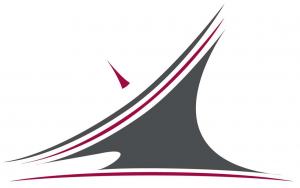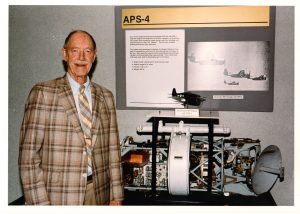
Mission
- To promote and encourage the study of STEAM (Science, Technology, Engineering, Arts, Mathematics)
- To collect, preserve, and exhibit artifacts and documentation related to the development of key electronics systems to motivate the next-generation STEAM workforce.
- To inspire visitors with an appreciation of the evolution of historical, defense, and commercial electronics.
History
The National Electronics Museum's (NEM) origins trace back to a 1973 Westinghouse Family Day. Robert Dwight, an employee at Westinghouse's Defense and Electronics Systems Center in Baltimore and a key planner for the event, envisioned showcasing employee products to their families that their families had previously not had the opportunity to see. The event exhibited "Yesterday, Today and Tomorrow," featuring three airborne radars—the AERO-13/AN/APQ-50, the AN/APQ-120, and the WX-200—representing different eras. Throughout the day, Mr. Dwight made the same observation: employees and their families were enthusiastically excited and proud to see the finished products of their work.

Robert Dwight
Inspired by this enthusiasm, Mr. Dwight, decided to actively pursue more radars and other electronic equipment to display to colleagues. With the help of fellow Westinghouse employee and former Air Force member Jack Sun, he sought to acquire a BOMARC missile radar (the AN/DPN-53, the first airborne pulse-doppler radar) from the Department of Defense (DOD). They quickly ran into an impasse and couldn’t obtain the BOMARC radar unless they were a legally recognized non-profit museum.
Undeterred, Mr. Dwight and Mr. Sun consulted senior Westinghouse lawyer Butch Gregory, who guided them through the process of establishing a nonprofit museum. After a considerable period, the National Electronics Museum was incorporated in the State of Maryland as a non-profit organization in 1980, originally under the name the Historical Electronics Museum.
Westinghouse provided the much-needed support in the form of financial aid and storage facilities. In 1983, the museum opened in a 2,000-square-foot space at Airport Square III near BWI Airport, expanding to approximately 4,000 square feet in 1986. Previously operated with a volunteer staff, the museum hired its first professional staff member in 1989. In 1992 the museum relocated to Friendship Square in Linthicum Heights, Maryland.
Northrop Grumman - Electronic Systems continued corporate support after it purchased Westinghouse Defense and Electronics Systems Center in 1996. A major expansion, doubling the museum's size to 22,000 square feet, was completed in September 1999. The renovated space included a new events area, an exhibition gallery, climate-controlled storage, an exhibition laboratory, a conference room, and a half-acre outdoor exhibit area.
In 2017 the museum welcomed a new exhibit “Satellites Transforming Our Lives” opened after nearly a decade of development. The museum thrived and grew, offering changing exhibits in its temporary gallery, expanding educational programming, and establishing annual events like Pioneer Camp, Electronica Fest, and Techno Swap Fest. The museum actively engaged students through STEM events throughout the region, supported by a dedicated volunteer corps contributing over 5,000 hours annually.
The 2020 pandemic forced the museum to close its doors for nearly a year and a half. During this time, the museum connected with its audience online through STEM demo videos, virtual events, tours, and social media engagement, encouraging at-home learning and enrichment.
In 2021, the museum faced another challenge when a major donor withdrew funding, necessitating a relocation and fundraising. After an extensive search, a new home was found in Hunt Valley, Maryland within System Source. This offered a co-location with the Computer Museum at System Source, with a significant upside to an enhanced emphasis on computers. This provided opportunities for partnerships, broadened outreach, joint educational programming, new events, and the continuation of the NEM mission. After over a year of downsizing, packing, and moving, supported by countless volunteer hours, the museum reopened on November 16, 2024, with a grand opening celebration reminiscent of the 1973 Westinghouse Family Day.
Now open to the public by appointment, under one admission to all the museums at the location, NEM welcomes visitors for tours, workshops, and events.
The National Electronics Museum has evolved into an institution that not only appeals to engineers but to students and the non-technical public as well. We offer people the opportunity to see and experience the "Yesterday, Today, and Tomorrow" of the electronics industry. As its founders envisioned, the National Electronics Museum showcases technological achievements and provides a platform for those involved in their creation to share their stories and accomplishments. The museum evolved into an institution that appeals to engineers, students, and the public, offering a glimpse into the "Yesterday, Today, and Tomorrow" of the electronics industry.